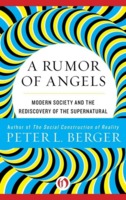I’m reading through Kevin Vanhoozer’s Faith Speaking Understanding: Performing the Drama of Doctrine, and there’s a tweet on every page. So, instead of loading up people’s twitter feeds, I thought it would be more merciful to list out some quotes here.
A brief set up. Vanhoozer is helping us see how doctrine must be done, which is good for the ivory tower preachers, theologians, & bookish types. When Jesus said  to “observe all I have commanded,” he was saying more than “take notes” (xiii). And yet, desire for God, without doctrine, is blind (xiv). Doctrine gives direction for bearing faithful witness, for speaking understanding” (1). How, then, does doctrine speak? Through the church, of course, for good or for ill, depending on you.
Here are a string of quotes that articulate the church’s glorious responsibility to live our doctrine as a theatre of the gospel in and for the world:
The church is ultimately a triune production, a theater of the gospel wherein we begin to see how God in Christ is “reconciling the world to himself.”
The church is not only the “people of the book” but also “the (lived) interpretation of the book.”
Doctrine serves as a finishing school for disciples by helping them to view their lives as Christ did his, as caught up in the area drama of redemption.
The church is the place where Christ rules by his word, which dwells in disciples’ hearts.
The church is not an empty space but a peopled place where God exhibits his gospel.
The church is the public revelation of the mystery of salvation.
The evangelical church finds itself in danger of being indoctrinated by culture rather than by Scripture.
The argument in the present book is that the church is a theater of the gospel in which disciples stage previews of the coming kingdom of God.
Imagination is biblical reasoning in its Sunday best, lost in wonder at the creativity of the Creator.
There is nothing more authentic that being transformed into the image of Jesus Christ, the prototype of true humanity.






 Sabbath as Resistance: Saying NO to the CULTURE OF NOW
Sabbath as Resistance: Saying NO to the CULTURE OF NOW